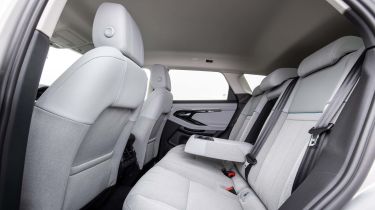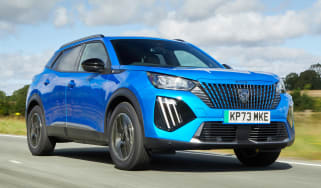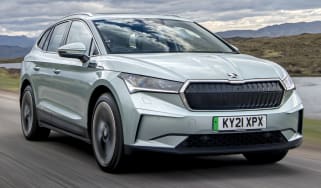Range Rover Evoque PHEV boot space & seating
Outright practicality has never been an Evoque trump card, but the P300e is no better or worse than other models in the range in this regard
| Length | Width | Height | Boot volume (seats up/down) |
|---|---|---|---|
| 4,371mm | 2,100mm | 1,649mm | 472/1,383 litres |
The Evoque has always put style ahead of outright interior and boot space, and things are no different with this P300e hybrid version of the latest incarnation. It's not an impractical car per se, but family buyers will find greater versatility elsewhere, including in the closely related (and cheaper) Land Rover Discovery Sport.
Range Rover Evoque PHEV interior space, storage & comfort
The Evoque hybrid's rear seats feel a bit tight for a full-size adult, partly due to the car's sloping roofline, but overall the situation is no better or worse than in the regular diesel and petrol-engined versions of the model. Longer journeys may become uncomfortable for adults in the rear as a result; sitting three-abreast will also prove pretty cosy, as the car tapers towards its rear.
Rearward visibility isn't great because of the pretty slim back window, but Land Rover does at least offer a technical solution in the form of the optional ClearSight camera-based rear-view mirror. For storage, there are four good-sized door bins, a large cubbyhole under the central front armrest and a useful rubberised tray on the centre console that can be used to keep your phone or wallet on. The cupholders are located beneath this.
Boot space
Luggage capacity in the plug-in Evoque is unchanged from that of the mild-hybrid versions, at 472 litres. That increases to a maximum of 1,383 litres (or 1,576 if measured to the roofline) when you drop the car's rear passenger seats. With so many other plug-in hybrid SUVs losing space compared to their petrol and diesel-engined equivalents, the Land Rover has done well here.



